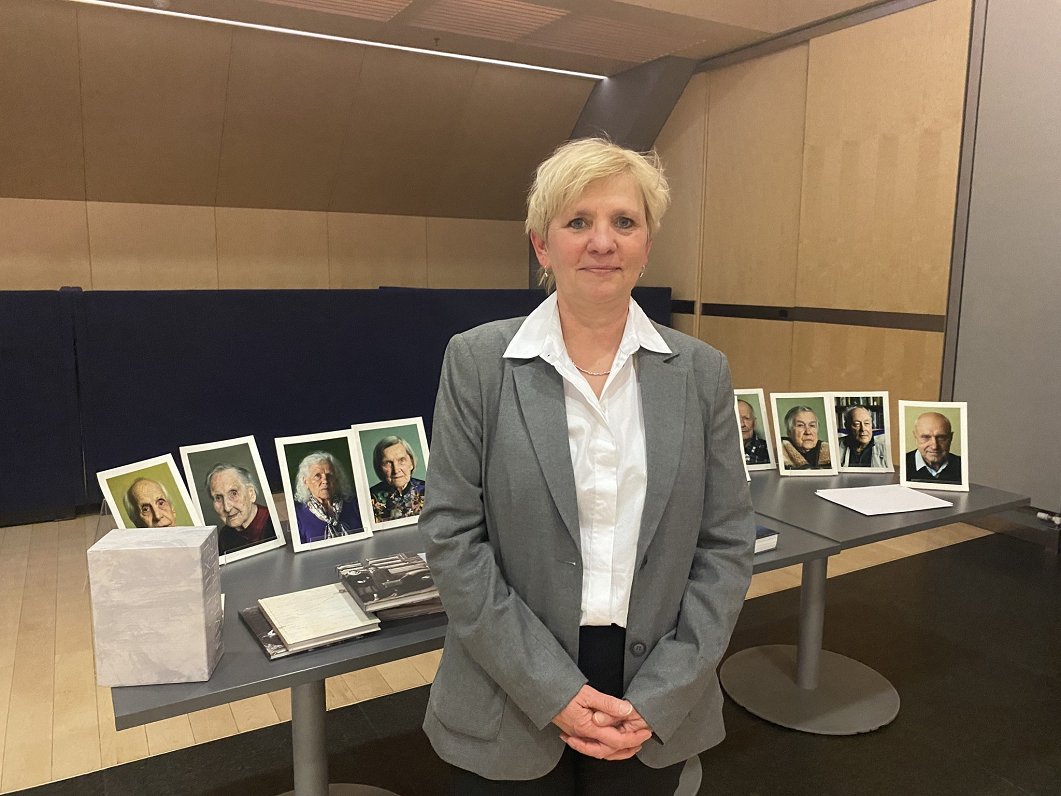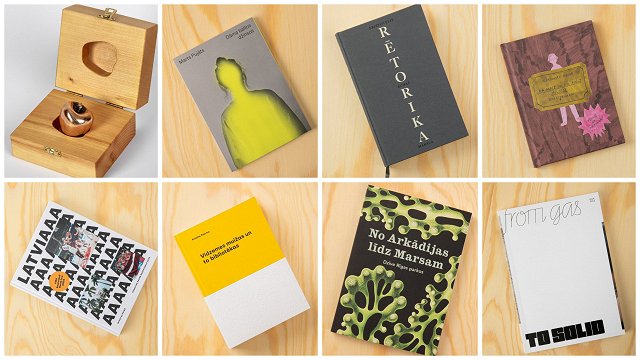It was a special presentation devoted to the oppression of communism, abuse of power and crimes against humanity: just a few days after Latvia, Estonia, and Lithuania marked the 75th anniversary of Soviet mass deportations, the book “Siberian Exiles – Freedom Fighters” was presented at the National Library of Latvia in Rīga.
The English-language photobook of the Dutch-German author Claudia Heinermann is part of a monumental trilogy about the mass deportations in the Baltic States and the fight for freedom and justice. It contains portraits and testimonials of eyewitnesses that tell of the deportations of women, men and children to remote parts of Siberia, life in the Gulag camps, the resistance against the Soviet occupation, and the beginning of the Cold War.
“I was overwhelmed by the horrors I learned about and by the scale of the deportations that tore so many families apart and that has left deep wounds and scares in the society to this day “, Heinermann said in her speech at the presentation, adding that she got the idea for compiling the publication while working on a previous project about the 'wolf children' (German war orphans) in Lithuania.
“I often heard about the deportations to Siberia and that triggered me.“
Heinermann knew about the Gulag camps but was not aware that thousands of people were deported from the Baltic States to remote areas in Siberia. “I felt ashamed that I and most of us in the West knew so little about your history. That motivated me to start this project in 2016 because I think your history should be part of our collective memory as well, “ the documentary photographer from Delft in the Netherlands told the audience at the event supported by the Dutch and German embassies in Rīga.
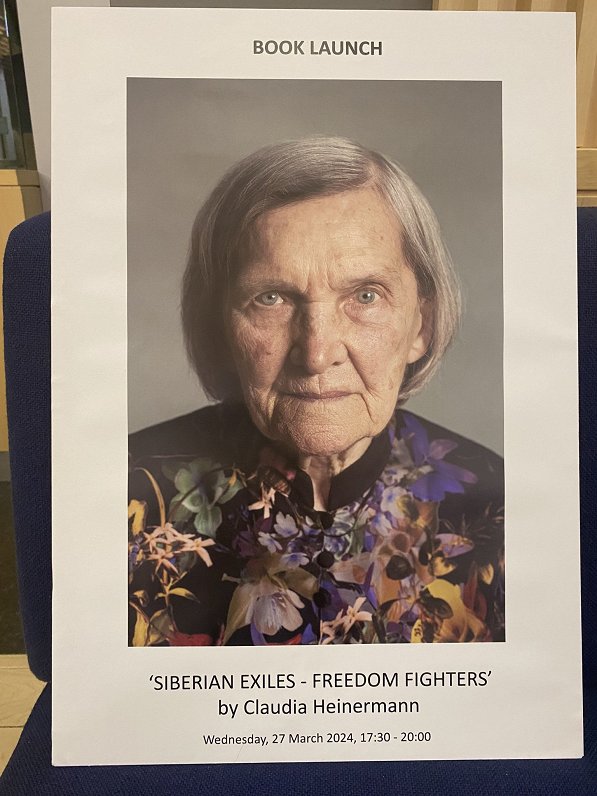
”I am truly touched and grateful that Claudia Heinermann gathered life stories of Latvian, Lithuanian, and Estonian men and women who joined resistance to fight for freedom of their country“, said Dutch Ambassador Claudia Pieterse in her welcoming speech at the presentation of the book, a copy of which later was also donated to the People’s Bookshelf in the atrium of the National Library.
The life stories and testimonials captured in the book are an inspiration for current and future generations to stand up for freedom and justice, according to the hosting envoy.
Recalling the mass deportations under the Soviet regime
In total, Heinermann worked for seven years on her long-term documentary project that resulted in the chronologically structured trilogy ‘Siberian Exiles’, all three parts of which she published between 2020 and 2023.
“When I started the project I had the idea to make one book. But during the research I learned about so many stories that deserve to be heard that I decided to make a trilogy. But even three books are not enough to tell the stories,“ the German-born author said, adding that her aim was to make the history more known to the general public in the Western world and protect it from being forgotten.
Hundreds and thousands of Estonians, Latvians, Lithuanians were subject to mass deportations by the Soviet authorities and sent to Siberia in cattle trucks to scratch a living from the permafrost at the frozen ends of the world. The "crime" for which most deportees were punished and sent to labor camps, prison or exile was either non-existent or a vague suspicion of potential disloyalty to the Stalin regime. Others were even deported without any conviction. For many it became a death sentence.
The mass deportations began on 14 June 1941 – less than two years after the Soviet Union signed a secret pact with Nazi Germany to carve up Europe and one year after the Soviet occupation of the Baltics. They recommenced on 25 March 1949 after the Soviets reoccupied the three countries again at the close of World War II following a few years of the Nazi occupation and continued later also during the partisan resistance movement that lasted until the mid-1950s.
The well-planned operations were carried out by the Soviet regime on a massive scale and saw people seized from their homes without warning and transported to the most remote and disadvantaged regions of the Soviet Union. Some died on the way, some died under the harsh conditions as the years passed – and a few made it home alive, often only decades later.
Significant contribution to consolidate European history
Among the returnees was European Parliament member and former Latvian EU Commissioner Sandra Kalniete who was born in Siberia after her parents were deported from their homeland. "Claudia Heinermann's photo exhibitions and written trilogy are a fundamental contribution to documenting the history of Latvia and the Baltic states and exposing communistic crimes,“ she praised the work of the Dutch-German authors, underling that "it is important that different people from other European nations tell about our history.“
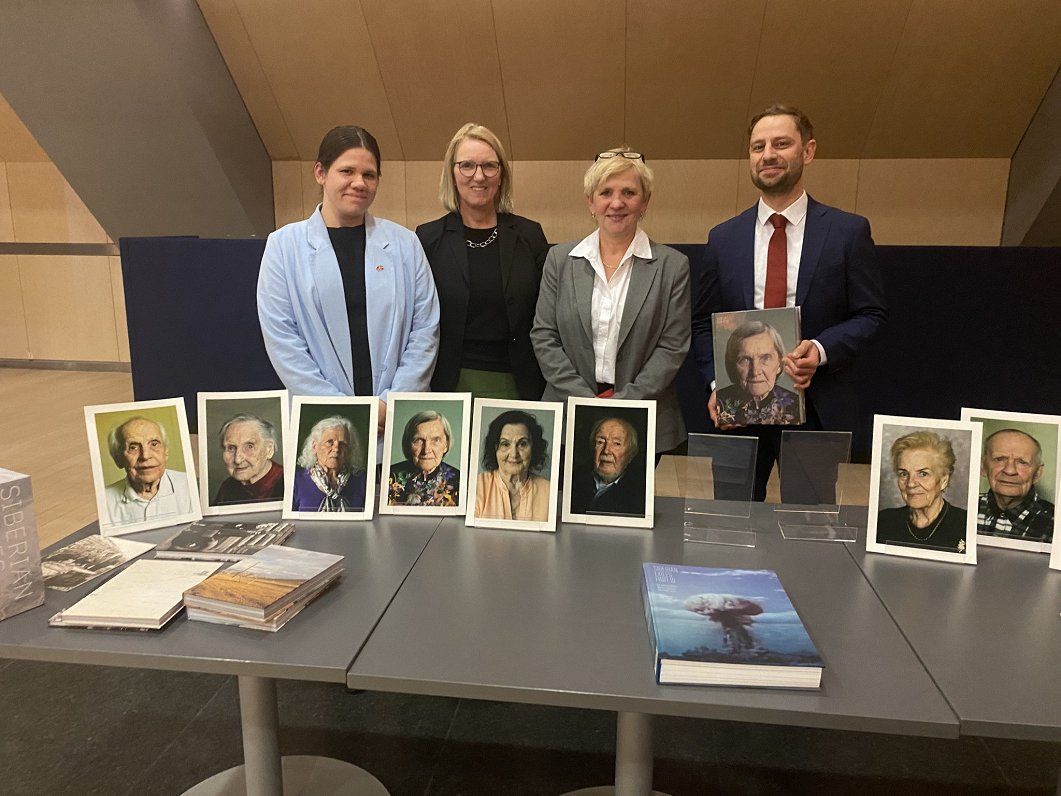
In Kainiete’s opinion there is too little knowledge in Europe and the world about what really happened during Soviet times in the Baltic states and that it needs to be brought to light what victims of communism have experienced. "When I was elected to the European Parliament, I set myself the goal of helping to integrate the history behind the Iron Curtain into the common history of Europe. But I did not think that it will be that hard as it was”, the 71-year-old politician and former diplomat said. "That is why Claudia Heinemann's contribution is so significant because it helps to consolidate European history.”
Kalniete herself previously captured the tragic events of the history of Latvia and Europe in the 20th century through a very personal narrative story of her deported family in the autobiographical book "With Dance Shoes in Siberian Snows". It was a best-seller in Latvia and has become the most translated work in modern Latvian literature – a must-read for anyone interested in the Soviet era and the pain it brought to the Latvian nation that affected basically every family and ruined thousands of lives.
The same is true for the comprehensive and intense trilogy of Heinermann. For her works, she travelled many times through the Baltic States, carried out extensive interviews with eyewitnesses and delved deeply into the archives. The documentary photographer also went to the places where the communist crimes took place – and kept coming across new traumatic stories that she considered worth and important to tell.
Poignant memories and life stories
All three parts of ‘Siberian Exiles’ are based on individual stories but each part has a different angle to tell about the deportations and the cruelty of the Soviet regime. The first part is about of six Lithuanian survivors who were deported to the Laptev Sea above the arctic circle and the third part about an Estonian woman, who was deported to the border of Kazakhstan where she eye-witnessed upper ground nuclear tests. Heinermann also went there on site with her camera and recorded what she encountered: the landscape of remote areas, the villages, the culture, and the indigenous people.
The second part ‘Siberian Exiles – Freedom Fighters’ presented in Rīga depicts the moving life stories of 14 elderly resistance fighters. Eight of them are from Latvia: Ernests Rudzroga, Biruta Rodoviča, Hilda Miezīte, Imants Grāvītis, Jānis Zemantis, Lidija Lasmane, Marta Vuškāne, and Mihalīna Supe. The main features of the photobook are poignant recollections by the eyewitnesses themselves that are complemented by brief information about the historical background. All of them are illustrated by fine artistic portraits and photos from personal archives, KGB files, prisons camps in Siberia and from the forests that had been a hiding place and refuge for many partisans for so long.
“I asked myself what is important to tell a Western audience about your history. For me personally the most important to explain is that the Baltic States were independent countries with their own culture, language and identity. That the Baltic States were occupied against their own will and that they were eager to defend their freedom. And that brought me to the freedom fighters“, Heinermann explained, adding that she considers them to be heroes with a strong willingness to resist and fight for the independence despite all the violence and repression.
Heinermann was particularly moved by the story of Latvian dissident Lidija Lasmane whose portrait is also on the cover of 465 pages hardcover book. “I was really fascinated and impressed by the fact that she did not stop, that she just kept going until the 1980s and even Vorkuta did not break her, “ Heinermann told LSM on the sidelines of the event, adding that she considers it “incredibly impressive“ to have such energy and strength to stand up against the Soviet regime over and over again.
Having been an active member of resistance during the Soviet occupation, the 1925-born Lasmane was first punished for supporting Latvian national partisans from 1946 to 1954. From 1970 to 1972 she was punished for dissemination of anti-Soviet and religious publications and from 1983 to 1987 for anti-Soviet propaganda.
“There is only one thing in life that really matters – to choose to do good. And you always have that choice,“ the former candidate for the 2018 Nobel Peace Prize is quoted in the book. Due to health reasons, Lasmane was not able to attend the event in person and also the other Latvian freedom fighters featured in the photobook were missing or represented by their relative and family members. The only one present was
the 1929 born Ernests Rudzroga, whose family was deported to Siberia on 25 March 1949, while he managed to avoid deportation and, seeing no other option, went into the forest and joined a small, mobile unit of Latvian partisans. He came to the book launch together with his grandson and to great applause received his personal copy of the photobook. It was a moving moment – not only for Heinermann and him.
History is being repeated in Ukraine
While in some Baltic families the traumatic stories experienced under the Soviet regime were not talked about openly, Rudzroga shared his memories about the deportations, the occupation of his homeland and the resistance movement with his descendants.
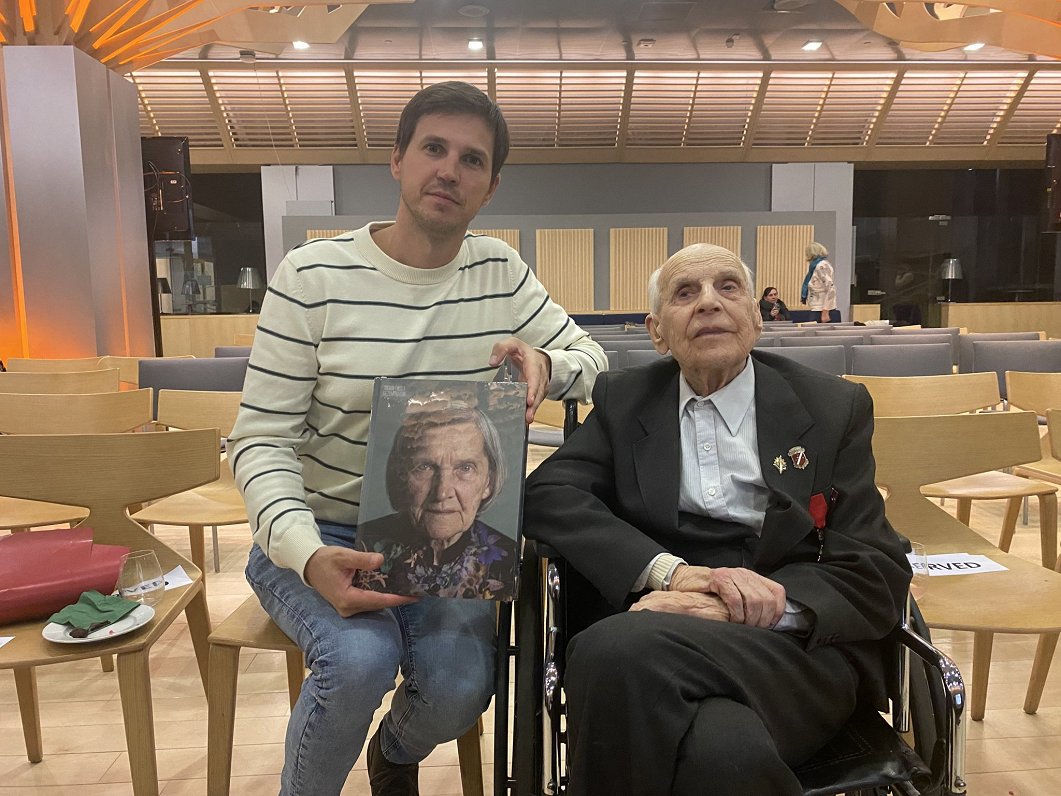
“About all these things and events that he back then went through, he spoke openly already when I was a school boy, ” Rudzroga’s grandson Dainis Pāls told LSM. ”Through the stories from my parents and grandparents, I know all about what happened and I knew very well what it was like. And I also clearly know that I would never want to have to live in such a system and would never want that my children have to grow up in such a regime.“
“I would like to believe that we will never return to something like that, that people will somehow take the lessons of the past as an example and the future will be different and better. I hope so but what is happening in Ukraine at the moment shows that the stories I heard seem to be history repeating itself“, Pāls said, indicating that what he sees now in videos and pictures of the Russian atrocities reminds him about the experiences of his grandfather.
“What I have heard and was told to me when I was a boy, I now see with my own eyes, many of these things have not disappeared anywhere. Therefore, it is very important for Europe as a whole to understand what we are dealing with“, Pāls said, while his grandfather Ernests Rudzroga sitting next to him in his wheelchair nodded in agreement. “This is why this book is very important.“
